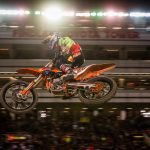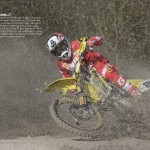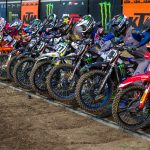*This week is not the first time that Monte Coralli has hosted ‘back-to-back’ Grands Prix. The tight and winding course was the scene of two starkly different events in 2008 and 2009 when the venue closed and opened those respective seasons. David Philippaerts was carried off the start-straight on the shoulders of the public as Italy’s first MXGP World Champion in what is still the last premier class championship to be decided in the final moto. Six months later and MXGP was back at Monte Coralli and attempting to slither around the hillside in one of the wettest races I’ve ever seen. I watched as riders circulated and formed a queue at the bottom of the hill to take turns trying to snake their way up through the slime. Many didn’t make it and the organisers finally took mercy on the MX1 field by calling off the second moto.
In 2012 Red Bull KTM owned both classes for what was the last visit to Faenza. Tony Cairoli was on route to fourth consecutive crown and Jeffrey Herlings wept atop the podium for what was his 15th career win after less than three GP seasons and the first of three MX2 titles.
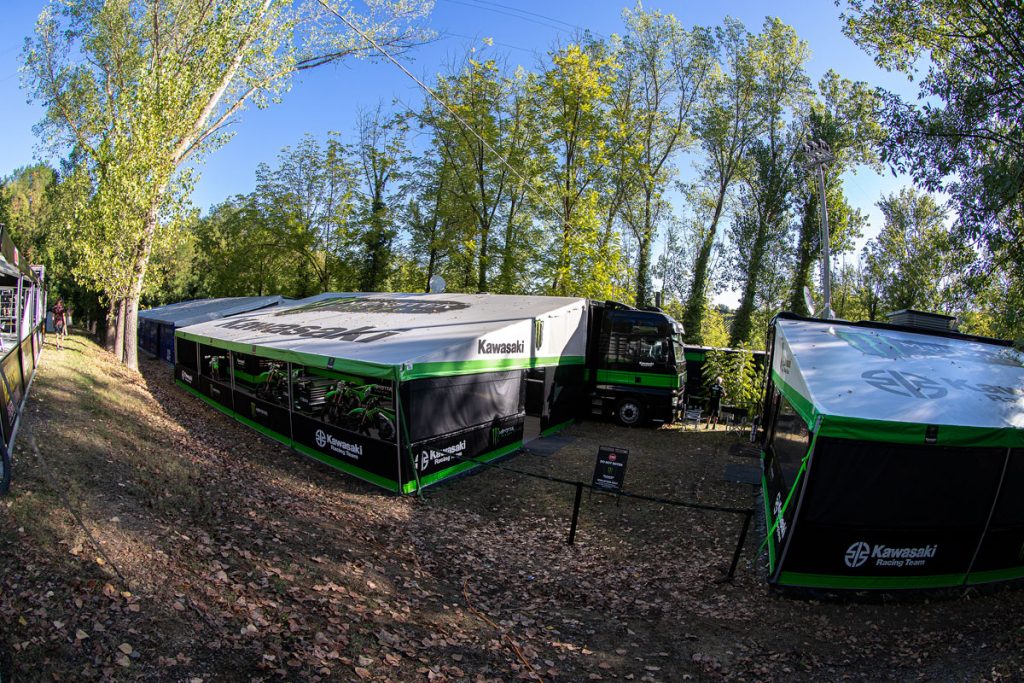
After that, the narrow paddock and even tighter entry point to the circuit were considered antiquated for MXGP. The facility barely had the room or the possibilities to accommodate a decent crowd and the sport was growing in Italy thanks to the style and dominance of Cairoli. Fermo, Maggiora, Ottobiano, Arco di Trento filled the gap.
For a public-free race-in-the-time-of COVID-19, Monte Coralli was again suitable, and the support from the Emilia Romagna region in acceptance of Infront Motor Racing’s protocol was another decisive factor.
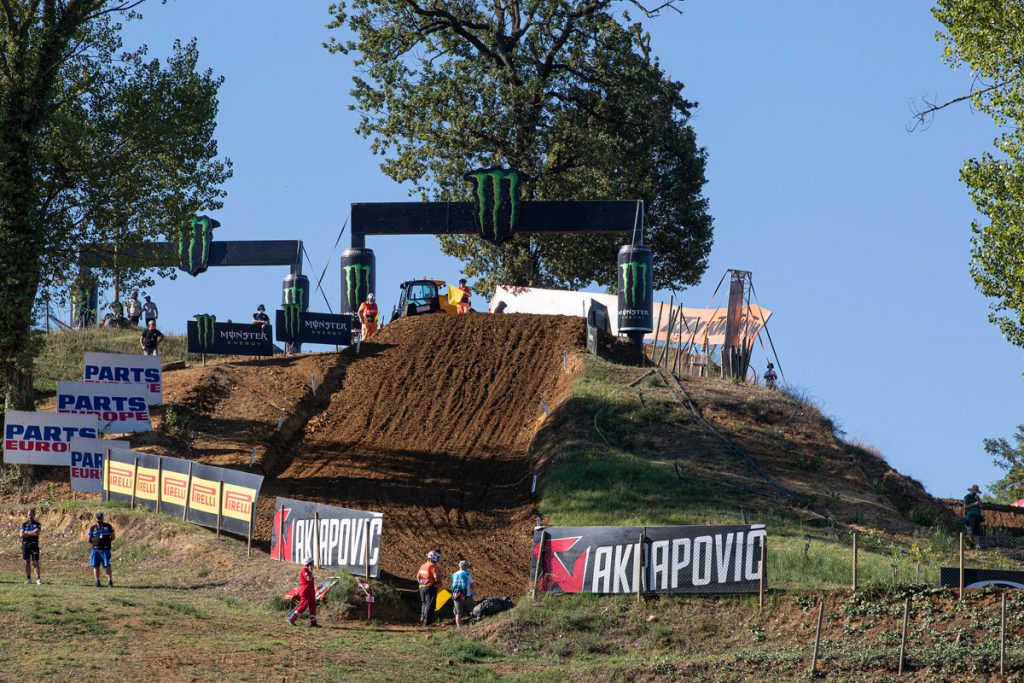
The openness of the Italians to embrace sporting events (a limit of 1000 spectators should be permitted for the last date of three in Faenza) has been an enormous vein of assistance for MXGP in fleshing-out a calendar. It’s the reason why the championship will hike the short distance west across the country in two weeks for another triple-header run at the city-centre sandy site of Mantova.
Returning to Monte Coralli brought back memories of those 2008 and 2009 fixtures. I passed Philippaerts in the paddock. The Italian is now inhabiting a youth development role with Yamaha. Annoyingly, he barely looks any different to when he fulfilled a lifetime dream twelve years earlier. The scars of two broken wrists were the most obvious timely marker.
Above all, there, surrounded by vineyards and Tuscan-esque small rolling hills, I was impressed by the state of the Italian terrain. The track preparation was surprisingly good and the amount of attention to watering also noteworthy. The layout mixed fast and hard acceleration, large ruts, minimal blue-groove and sections of tight, curling corners. It produced an eyebrow-raising lap-time of almost two-minutes. The races were processional at times, with the chronos all so close, but riders still found the lines and impetus to gain ground and apply pressure. MX2 provided moto finishes both less than 0.4 of a second and resilience from Herlings on Jorge Prado (so nearly becoming a polished article on the 450 despite his injury setbacks) and Jeremy Seewer on Herlings in the second moto kept the questions coming and the attention fixed all the way to the flag.

What next? There is barely room to extend or change the track trajectory. Monte Coralli is limited by the hill and the confines of neighbouring land. Look instead for obstacle alterations and other tweaks for the second and third bites of the Faenza grape.
*It’s tempting to hunt for MXGP stories in the paddock, much in the normal way. But then a quick reminder of the intensity of the calendar makes the exercise somewhat pointless. A narrative about a rider’s flowering progress for one Grand Prix is rendered obsolete in a matter of days if crashes or injury twist fate. The case of Liam Everts is perfect example. Stefan’s teenage son, Harry’s grandson has been increasingly feted as Belgium’s next big hope after Jago Geerts but his 2020 season of progression in EMX125 (he was leading the competition) came to a swift halt on Saturday with a broken and dislocated right wrist.
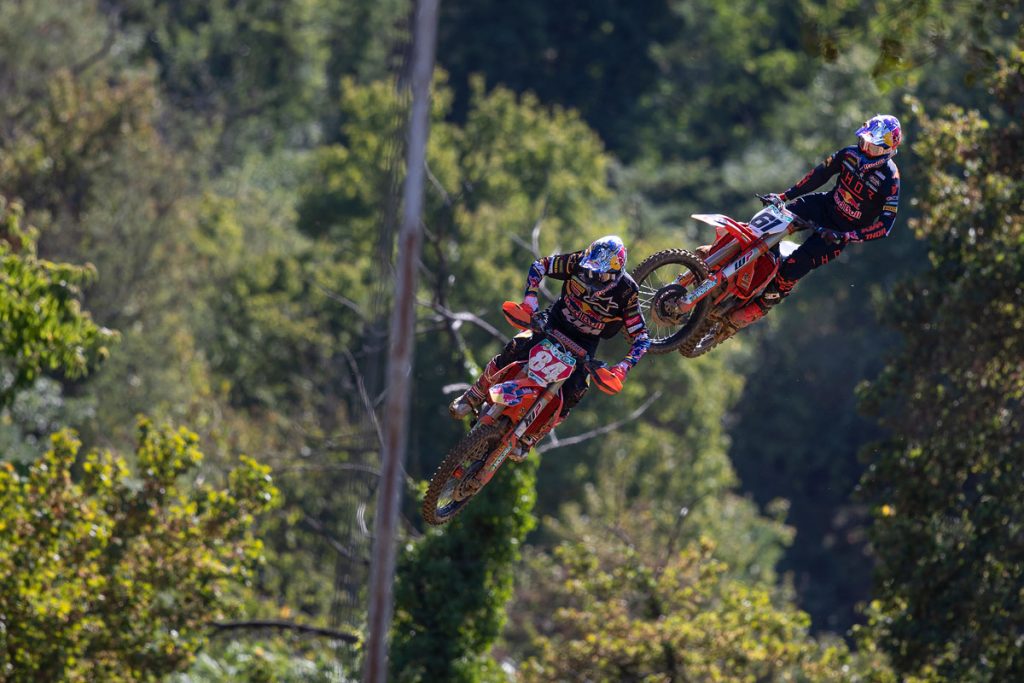
Sunday evening and the same could be said of the stars of the Latvian triple header. Glen Coldenhoff and Arminas Jasikonis were some distance from the leaders. While Tim Gajser rued his mediocre starts and suffered another crash. Come Wednesday and the formbook could turn. Herlings’ 1-1 and his fourth win from the six GPs to date were ominous as he now has a 60 point lead over Cairoli, but the Dutchman did not run away with the Italian Grand Prix. If he cannot maintain his top-five prowess out of the gate then he’ll have busier days yet at Faenza. The riders closest to his rear wheel are Prado – the Spaniard assisted superbly by his continual excellence out of the gate (even if Herlings claimed his teammate was riding “defensive lines” for most of his time leading 24 of the 34 laps in both motos) and Seewer.
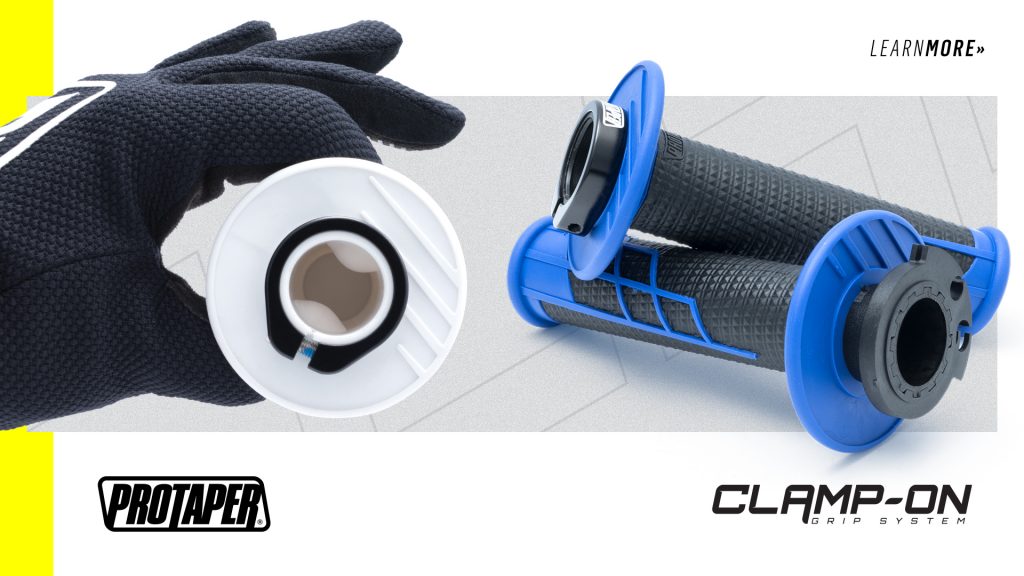
A word on the Swiss: 2020 should have been the season that Seewer’s career ‘spell’ was broken. His streak so far means he hasn’t missed a Grand Prix since he joined the world championship in 2015, has risen up the standings each and every year in both categories and reached #2 in MXGP at the end of his second term in 2019. Now, while he sits 85 points away from making that last numerical step this summer/autumn, Seewer’s latest clear signs of progression come from just how close he is to scoring that maiden MXGP victory. He didn’t have the chops to relegate Herlings on the final lap of the second moto (not many do) which would have secured the overall but it was the second time in six GPs where a triumph was agonisingly close. “This was the third time I was just 1-2 seconds off a win,” he half-smiled. “Twice it would have been a GP win also, so I’m getting really close. Of course I want it. There are plenty more chances and even this week and these days. I will keep pushing. Mentally it is not the easiest time but I’m happy to be 2nd overall.”
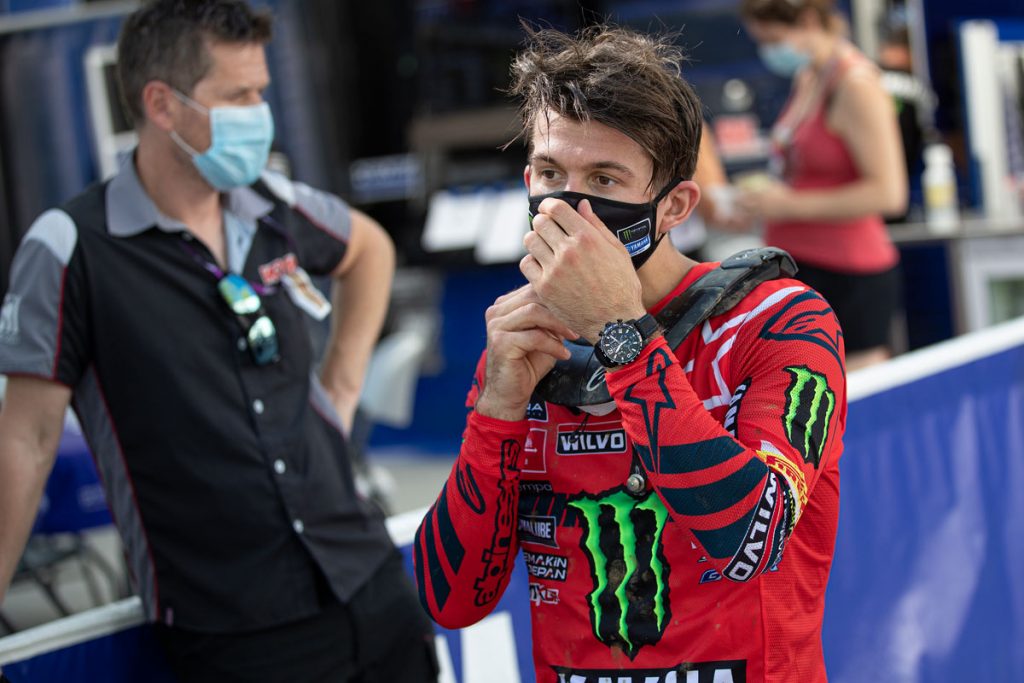
*There is good reason to keep a close watch on MX2. The duel between Jago Geerts and Tom Vialle slimmed from 4 championship points to just 3 but Geerts was arguably the ‘winner’ from last Sunday. Why? The Belgian gladly profited from Vialle’s first race slip to grasp the chequered flag (he now has seven compared to Vialle’s four) and took a podium spot one place higher than his French rival. More importantly, Geerts had a calm and effective day of work. It could be said that he has to bag as many points as possible on the hard-pack before being able to use his superior skills to full effect for the six sandy GPs and twelve motos in the soft stuff to come. Geerts is, of course, no slouch on hard-pack but he is very much the man to beat on his natural terrain: the Italian races in Faenza and Arco di Trento in the autumn are more of a leveller.
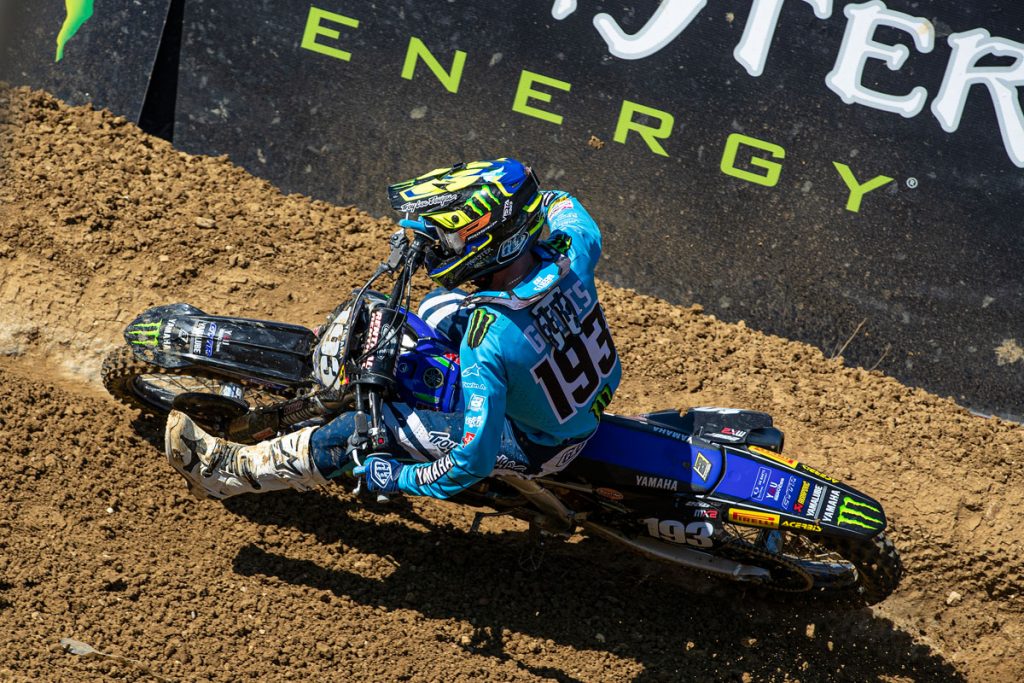
The real victor of course was Maxime Renaux and such is the style and potential of this 20 year old that I hope these spoils (the first ever for the SM Yamaha team) opens the tap on his battered confidence (two years of injury and a complete halt to his rapid progress as a teenager was harshly debilitating). The Yamaha stalwart should be set for Ben Watson’s factory seat in 2021 and a return to the Kemea awning (Watson ages-out of MX2) although his work with former Supermoto world champion Thierry Van Den Bosch seems to be paying-off. The Frenchman was the first rider in 2020 to break the Vialle/Geerts grip on MX2. He is already up to 3rd in the championship in front of Jed Beaton, who continues to strive for the starts to match his speed, and the F&H Kawasakis: Roan Van De Moosdijk smashing his bike to bits in the first moto and Mathys Boisrame waging heavy war against Vialle but lacking the consistency to continue the team’s persistent role in the MX2 podium ceremonies this year.
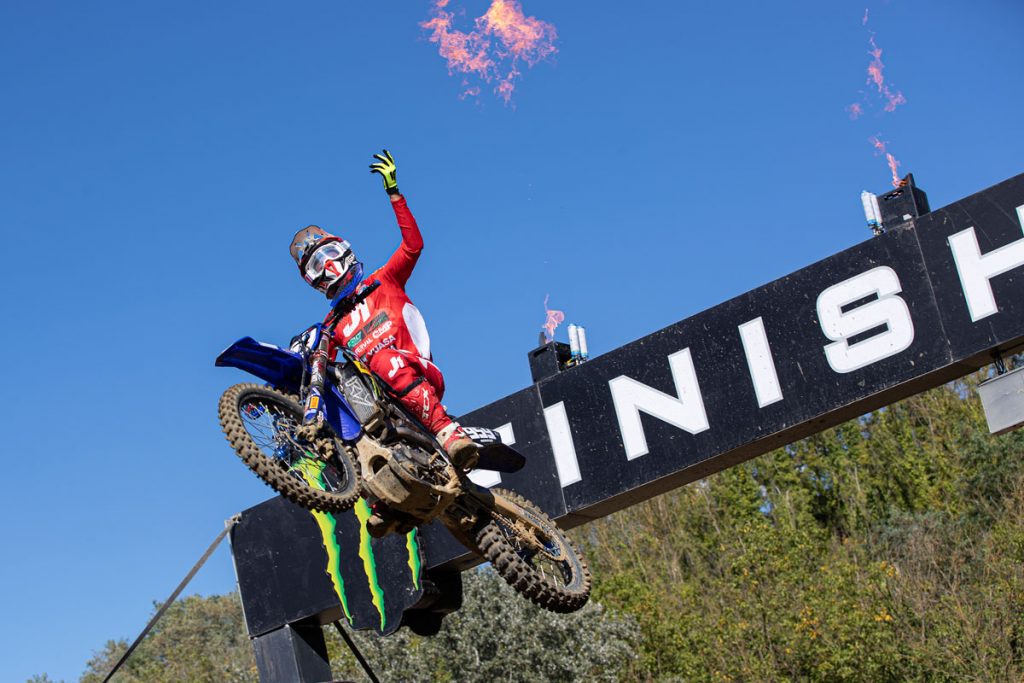
*Jeffrey Herlings was all about the ‘90’ at Faenza. 8 years and 75 wins on from his last milestone at the same circuit. With a fresh three-year Red Bull KTM deal ahead, the Dutchman is on course for the kind of statistical immortality that constitutes one of his career goals. Number ninety drew him level with soon-to-be 35-year old Cairoli as the second most successful GP rider ever. Just 12 wins more will lead him past former mentor and now long time-estranged colleague Stefan Everts.
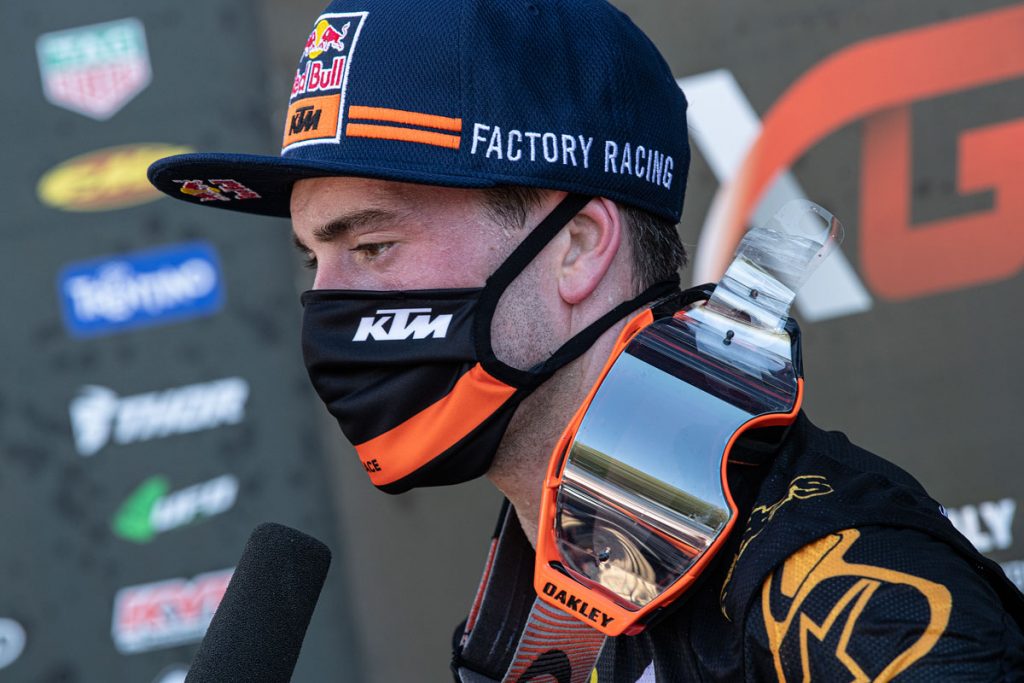
“It will be difficult because the competition is strong but, hopefully, I can do that minimum [required] in the next few years,” he said Sunday afternoon. “Taking the average [we’ve seen] in the last few years it should be realistic and possible. My goal is not to keep racing as long as Tony or as long as Stefan did. I started younger and I think it is more intense now compared to what it was fifteen-twenty years ago. I’ll do my best to get it. I don’t think [winning] ten championships are realistic…but the 101 GPs wins could be interesting.”
At the beginning of 2006 then-Yamaha Racing Manager Laurens Klein Koerkamp introduced the factory Yamaha team of Everts and Cedric Melotte. At the presentation that took place at Zolder the Dutchman took the microphone and half-jokingly (and half-disbelievingly) hinted towards the craziness of Everts’ privately expressed goal of reaching 100 GP wins that term. It would require a season of near-perfection. Too much to hope for. The Belgian not only aced that tenth title but pushed the numbers up to 101. Josh Coppins was the rider who ensured a small piece of motocross trivia relevance when his second moto blitz in Northern Ireland halted Everts 100% trek of GP spoils. When the #72 pulled down his career curtain a few weeks later with a white and gold livery at Ernee in France, ‘101’ was seen as an impossible quantity to breach. Everts would be remembered as the best ever, and would have the figures to match.
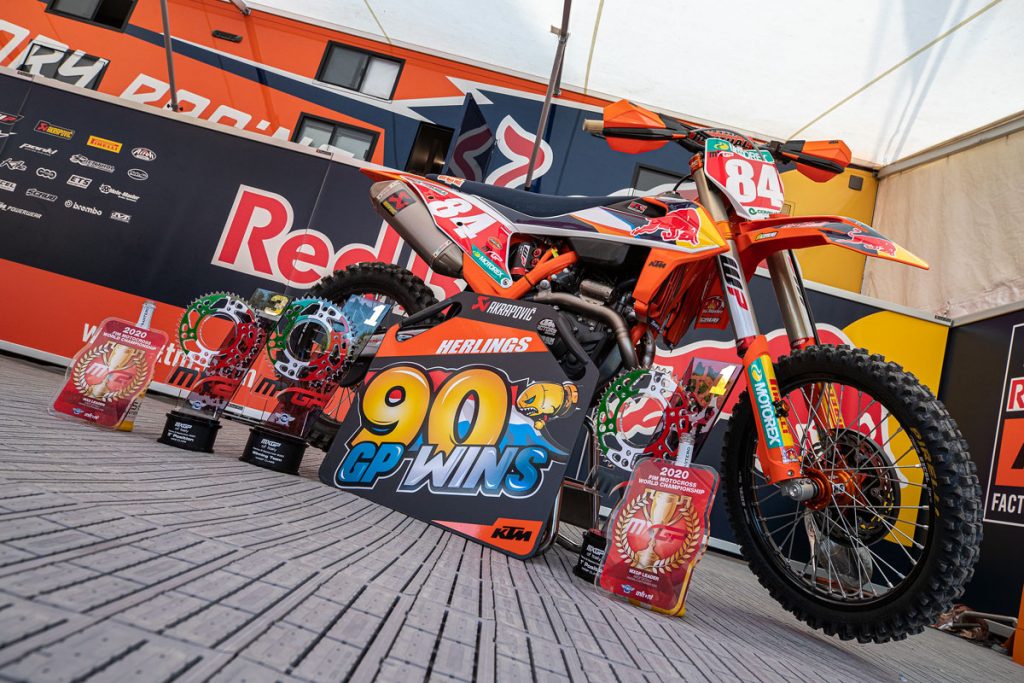
Herlings is now on the path to eclipsing him. The 25-year old’s insatiable thirst for victory has led to injury, alleged bonus schemes where he was only paid when he won (as opposed to top five renumeration, as is the case for most riders) and rash decisions…but the one-team star has been set for this distinction from that first victory at Valkenswaard in 2010 as a fifteen year old and from the days when he battered the MX2 class with relish, ensuring three world championships would cast him as the #1 Dutch rider of all-time.
Disaster could strike, and it did through 2019 (even if he did add two more to the tally at the end of the year) but I’m sure I won’t be the only one who will be counting down the races, hoping Herlings can make it. I’m seen him perform some very special feats on a motorbike – he is the MXGP version of Marc Marquez both in skill and obsession – but to reach 102 would be sensational. And this time I won’t repeat the mistake of writing that the record won’t be matched, even though it again feels highly unlikely. Everts, to his credit, said on more than one occasion publicly that records existed to be beaten. It will be a special day if and when Herlings breaches 101 and then posts 102.
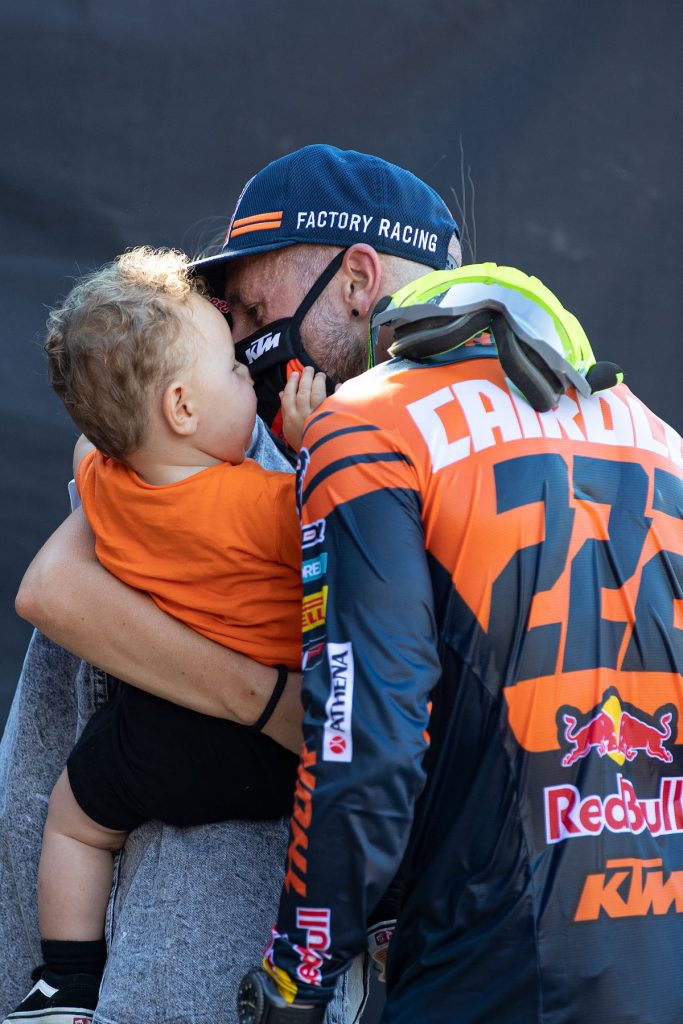
Cairoli still has a chance also. The Italian is now on 168 podium results since 2004 and is nearing the achievement of 10,000 points. Even though he claims that the record books don’t mean as much to him as his teammate, the prospect of catching Everts’ tally of ten titles is a ‘carrot’ always hanging in the distant background.
*On Sunday morning, most of the paddock talk revolved around former Motocross of Nations podium finisher Brian Bogers. The Team Netherlands racer had apparently produced a positive PCR test for COVID-19, according to his Marchetti KTM team. The ex-HRC rider had been tested at the circuit on Thursday and the result only came to light on Sunday.
Infront Motor Racing, according to their protocol, were forced to declare the rider as ‘unfit’ and he missed the first moto. Bogers also had to enter self-quarantine. Marchetti staff, who say they all received negative results as did Bogers’ partner and family who were staying with him at the track, pushed for a second test. Bogers eventually lined-up in last place in the waiting zone for the second race after the same sample had been examined: apparently the ‘positive’ verdict had been incorrect.
The whole episode was disappointing for Marchetti and Bogers but it was a scare for the series and the paddock. Infront’s protocol – the document by which they are granted permission to stage international events by national and regional governments – emphasise strict sanitary and health conditions in the paddock. Principally, those entering the circuit need a clear PCR result three days before the Grand Prix and within twenty-four hours of arrival at the venue or in the country.
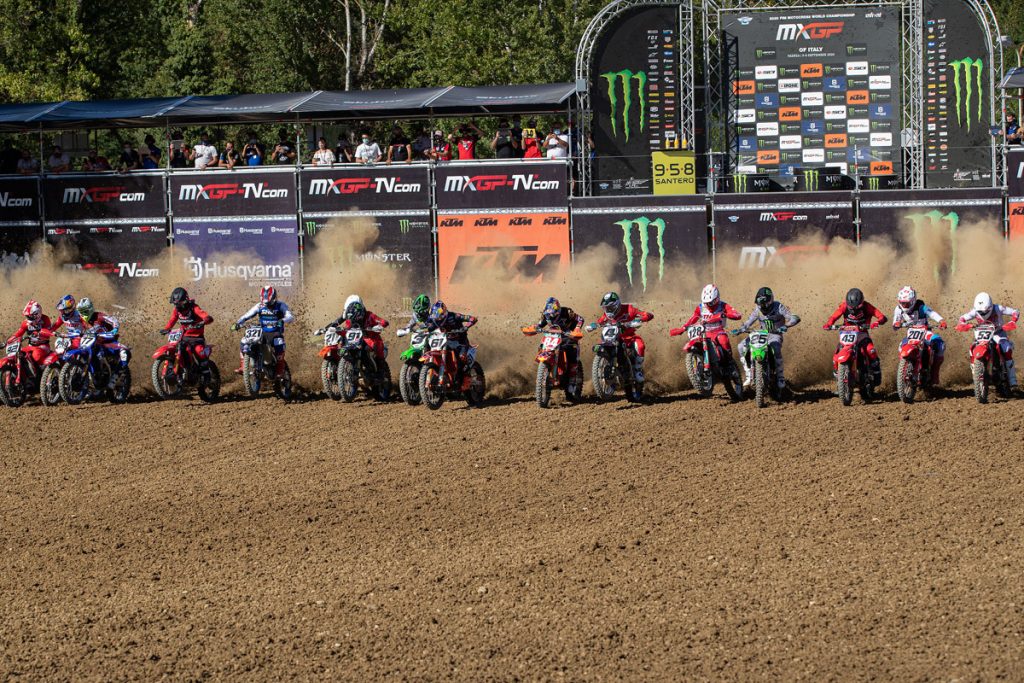
Compared to the service provided in Latvia the problem with the Italian testing scheme seemed to be the turnaround times for results. Bogers seemingly made his PCR check at the circuit booth on Thursday but wasn’t informed of his status until the Sunday, by which time there was little margin to react or limit the potential spread of the virus.
It’s a system that will need examination and a potential overhaul, especially with MXGP now existing in ten-hour time frame. PCR tests are not cheap. In Spain a private procedure costs 150 euros. In both Latvia and Italy it was almost 70. While the chances of MXGP gathering almost 1000 people together from a widespread of European countries and avoiding even a trace for COVID-19 are realistically slim; the Bogers affair showed the need to think quickly of a Plan B both for the sport (what if, say, Cairoli, Febvre, Seewer test positive and their respective teams have to withdraw?) and for the health of the paddock. Assurances over the speed and efficiency of testing and submission of second samples with even faster verification would be the first forward step.
Aside from encouraging social distancing and cleansing – something that Infront Motor Racing and several teams do well (in fact overly well, with the need for masks on the podium, TV interviews and in press conferences even too excessive) – there is not much more that can be done to minimise risk beyond scrutiny of the testing procedure.
It also leads to thoughts of 2021. There will soon be pressure for provisional calendars to make an appearance even when 2020 schedules are still easy targets for change. Leaving aside the major hurdle of doubt over public attendances, will the series want to swap PCR test certificates for proof of a fast-tracked vaccine injection? It seems the road is still not as clear as some of the slick Italian hard-pack.
By Adam Wheeler @ontrackoffroad
Photos by Ray Archer @rayarcherphoto

